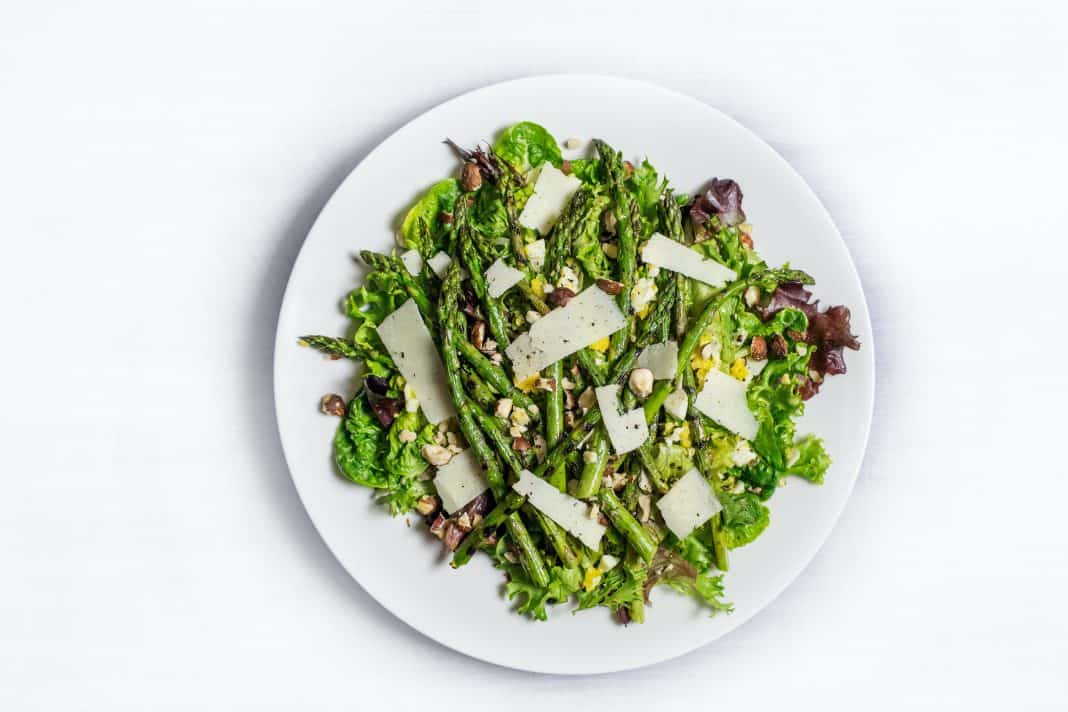In the world of health and nutrition, everyone’s always looking for the next miracle food that will nurture our bodies and taste good going down. While no one can predict the next big healthy eating trend, we have a hunch about what it might be: Stem vegetables. From their versatility to their abundance of nutrients and fiber to their delightfully earthy flavors, stem vegetables offer a lot to love. Here’s why you’ll want to load your plate full of edible stems.
What are stem vegetables?
The term “stem vegetables” might be new to you, but chances are you’re already eating them. Stem vegetables are quite literally the edible stems of plants, which chefs (and home cooks) treat as vegetables. (Think: asparagus, leeks, and celery). “The term ‘stem vegetables’ is even new to many dietitians,” explains Robert Lazzinnaro, registered dietitian at Copeman Healthcare Centre in Vancouver. “It’s hard to say exactly where people are going with that term, but we would generally consider stem vegetables to be the classification for different vegetables based on the way they grow and what parts you eat.” Essentially, stem vegetables are different from root vegetables and tubers in that you eat the parts that grow above ground rather than under the soil. (Although stem vegetables do pair nicely with roots and tubers!) Did you know that you can actually eat the stems of many different types of vegetables? For example, broccoli stems can be sliced thinly and sauteed in sesame oil. With that being said, though, the stem vegetable definition tends to focus on plants that are largely just, well, stems and stalks. Broccoli wouldn’t fall under that classification because the flowering head is the primary part that’s eaten. Got it?
Why You Should Eat Your (Stem) Vegetables
Unlike other veggies in your crisper, stem vegetables have the unique advantage of being almost entirely edible. (No de-seeding, skinning, or peeling necessary!) “Stem vegetables are very well known for being entirely edible and not having to get rid of anything,” says Lazzinnaro. “I’m a big fan of sustainability and less food waste.” As for health benefits, any vegetable (stem or otherwise) is a good vegetable, says Lazzinnaro. They all have fiber and valuable vitamins and nutrients that our bodies need. “Whether you’re in the U.S. or Canada, the amount of vegetables we consume is actually pretty low,” he says. “If you like stem vegetables, even better because you can eat most of the plant and get those veggies in regularly.” We found some compelling facts about certain stem vegetables that might just give you the motivation you need to stock them in your kitchen:
Asparagus
A half cup of this stem vegetable (a springtime favorite!) boasts more than a third of your recommended daily amount of folate. Also known as vitamin B9, this is an especially important nutrient for pregnant women to help foster development of the fetus.
Rhubarb
Fans of classic strawberry-rhubarb pie have a good excuse to take a second helping of this dessert, as rhubarb is a stem vegetable rich in vitamin K.
Celery
Researchers have discovered compelling evidence that celery extract might lower blood pressure. Talk about the power of stem vegetables!
Nopales
Nopales, or edible cactus, has high amounts of magnesium—and makes a creative vegetarian taco filling.
Creative Ways To Cook Stem Vegetables
The key to boosting your consumption of fresh veggies, including stem vegetables, is finding creative ways to make them taste great. So what’s the best way to cook edible stems? “Just like cruciferous vegetables, stem vegetables taste great roasted and in stir-fry,” suggests Lazzinnaro. If you’ve got big plans for summer grilling, you’re in luck: Some stem vegetables take on a smoky flavor and crisp texture when cooked on the barbecue. “Asparagus is really awesome on the grill,” says Lazzinnaro. You can also drink your stem vegetables by tossing them into a juicer. Keep in mind that juiced veggies contain less fiber than eating them whole, though. If you find yourself just as addicted to edible stems as we are, don’t stop exclusively at stem vegetables. There are creative root-to-stalk cooking techniques that can work for the edible stems of all kinds of vegetables. (Remember the trick about slicing broccoli stems and sauteeing them? Trust us, it works.) You can turn blanched kale stems into a flavor- and nutrient-packed pesto by tossing them into your food blender with a splash of olive oil, a handful of your favorite nuts, some garlic and lemon juice, and salt and pepper. There’s always the option of turning the leftover stems of produce into a tasty vegetable stock. Then, toss in some chopped up stem vegetables, like celery, and make a healthy soup. Once you savor the dynamic flavor of homemade veggie stock, you’ll never want to use the store-bought stuff again. Whether you’re just learning about them or you’ve been savoring them your whole life, stem vegetables can help you increase your vitamin, nutrient, and fiber intake—while reducing kitchen waste. And we consider that a win-win for mindful eaters everywhere.



